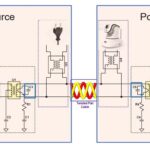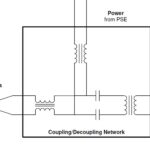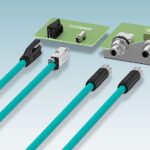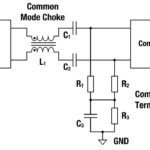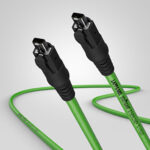Single-Pair Ethernet (SPE) isolation inductors and transformers are available in several configurations. They are used in applications where simple capacitive isolation is not sufficient. There are two types of SPE isolation transformers, simple chip transformer designs and so-called case transformers that can combine the functions of isolation with common mode rejection.
This FAQ looks at the applications for SPE isolation inductors, the technicalities that separate isolation inductors from transformers, and look at the emergence of industrial SPE that’s driving the need for transformer isolation.
SPE isolation inductors are needed in one of the three SPE implementations. The two implementations without an isolation inductor are simple data transfer and non-isolated power over the data line (PoDL). The third includes safety-critical applications where galvanic isolation is required. For these environments, an isolating transformer or coupled inductor is used in addition to the common mode inductor (CMI), sometimes referred to as the common mode choke (CMC), and the differential mode inductor (DMI) to prevent unwanted currents from flowing between the two devices (Figure 1).

The difference between an isolation transformer and a coupled inductor is largely semantic and based on the application. Isolation transformers are associated with power applications while coupled inductors are often associated with signal applications.
SPE was originally developed for automotive applications. In 12 Vdc-powered automotive environments, capacitive isolation is often all that’s needed. As SPE has been extended into industrial Internet of Things (IIoT) applications and machine and building automation, higher levels of isolation are needed.
When capacitors aren’t enough
Capacitors with 50 to 100 V isolation that work in automotive applications don’t fit in the industrial applications for SPE. The IEEE 802.3cg standard that’s the basis for industrial SPE requires insulation according to the requirements of IEC 62368-1. The IEC standard calls for withstanding 1,500 Vac (2,250 Vdc) for 60 seconds. That requires the use of blocking capacitors rated for 2,000 V isolation. Current capacitor technology is not suited for such high voltages. For example, standard multi-layer ceramic capacitors (MLCCs) made with X7R dielectric and rated for 0.1μF in a 2225 size are only rated for 1,500 V. Capacitors rated for 2,000 V as required by IEC 62368-1 would be too large to be practical in most SPE applications (Figure 2). That’s where isolation transformers come in.
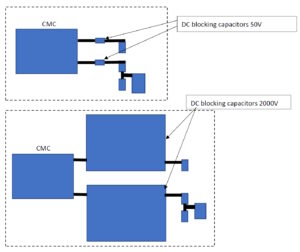
Chips vs cases
To meet the IEEE 802.3 standard and deliver 2,000 Vdc blocking, transformers are used in industrial SPE devices. There are two transformer technologies to choose from, chip and case:
- Chip transformers are tempting since they are very compact. Unfortunately, most chip transformers can only provide a maximum isolation rating of 1,500 V and are not suitable for industrial SPE isolation needs.
- Case transformers are wire wound on a ferrite core and can achieve isolation ratings up to 3,000 V, or more. In addition, case transformers are available that combine the transformer and CMI functions, reducing component count and shrinking solution size. Finally, case transformers can be designed with a center-tap connection to ground that provides a low impedance path to ground for common mode signals.
Summary
SPE isolation inductors and transformers are required in emerging applications in the IIoT and in machine and building automation. At the higher voltages found in those applications, simple capacitive isolation is insufficient. To meet the requirements of IEC 62368-1 transformer isolation is required. In addition, some SPE isolation transformers combine the functions of isolation and the CMI.
References
Single Pair Ethernet for Industrial Applications, Würth Elektronik
Single Pair Ethernet: How to implement 10Base-T1L, TDK
Transformer insulation advantage of Single-Pair-Ethernet, Magnetic Communication
What is a coupled inductor?, Coilcraft

